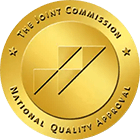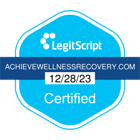With the opioid epidemic regularly making headlines, and concern over both the risk of addiction from pain management medication and the worries about under-medicating pain, there are many people looking for newer, safer, and more effective pain medications.
Tramadol is one of those medications that’s often touted as a solution for the opioid epidemic. A medication that offers high levels of pain relief for illness, injury, and chronic pain, yet also comes with a lower risk of addiction.
But is Tramadol really the miracle drug it seems to be?
Here’s what you need to know about tramadol, how it’s used, and whether this drug is addictive.
What is Tramadol?
Tramadol is a relatively common pain medication that can be prescribed on its own or in combination with other drugs like Aleve [1] to relieve moderate to severe pain.
It’s important to know that Tramadol, despite often being described as an effective alternative to traditional opioid medications, is actually a synthetic opioid in itself.
The difference between an opioid and an opiate [2] is whether the drug is derived directly from the opium poppy, like morphine, or if the drug is created in a lab using the same or similar chemicals as the ones found in opium poppies. So, while Tramadol may be part of the solution to the opioid crisis, it’s still an opioid itself. We mention this because it’s important to know when it comes to figuring out whether Tramadol is addictive. After all, the type of drug a medication is tells you a lot about how it interacts with your brain and body.
All opioids are at least slightly addictive, but they can vary widely in how addictive they are, and what kind of people are at risk of addiction when they use them. Opioid use disorder [3] is the name for addiction to any opioid and is a common problem in the United States.
How is Tramadol used?
There are two basic kinds of tramadol, extended-release and regular. Both offer about the same level of pain relief, but the doses and duration of the medication are different. Both are used for moderate to severe pain, but the extended-release tablet is typically reserved for chronic pain.
Most of the time tramadol isn’t used long-term, but there are exceptions for chronic pain patients, which is common for most opioid medications.
In the short term, tramadol can be taken as needed, rather than being a drug you need to take on a schedule. That can be useful for people who have severe pain but are recovering from it because it gives you a little more flexibility.
That said, that flexibility still comes with the need to be responsible for how you take the medication. Like other opioids, tramadol can leave users feeling high, euphoric, and physically very good, which can lead to problems from use, especially if you take the medication when you don’t need it or take more than you need at one time.
Side effects and risk of Tramadol use
All medications come with some side effects and risks. The side effects and risks are generally better than the pain you’re treating with the medication, but there is always a small risk that you might be someone who has more severe reactions to the medication.
The good news is that, if you do react badly to tramadol, other options may not come with the same side effects and risks. You can always talk with your prescribing doctor if you’re worried about a medication or feel like the medication you’re taking isn’t a good fit for you.
Here are some of the common side effects of Tramadol [4] that you should be aware of if you or someone close to you is taking this medication:
Risk of taking Tramadol
The most common risk associated with taking Tramadol is the risk of addiction. More rarely, people may also have a risk of an allergic reaction to the medication, which may develop even after they’ve been taking the medication for a while without a reaction.
In addition, like most medications and all opioid medications, there is a risk of overdose. Overdose and addiction are both more likely if you don’t take the medication as prescribed, but there is a small risk of both even if you do take the medication as prescribed.
Your risk of addiction increases the longer you take tramadol, and the more of the medication you need to take to get adequate coverage of your symptoms.
If you’re concerned about the risk of addiction, you can always talk to your doctor about your concerns, possible signs of addiction, and options should you suspect that you’ve developed an addiction. Having a plan in place before addiction happens can both help prevent an addiction from happening and make it easier to deal with an addiction if you do develop one.
Is Tramadol Addiction Treatable?
Yes, all addictions are treatable, and there is always hope if you have an addiction. The trick is finding the right treatment for you or the right combination of treatments for you. Once you’ve found the right treatment, you can overcome your addiction, no matter how severe it’s become.
How to get Help?
If you are ready to get help for tramadol addiction or are looking for resources for someone close to you, you’re in the right place.
One of the best ways to overcome addiction is by going to an addiction treatment center that can help identify the risk factors for your addiction, your triggers, and the techniques and coping mechanisms you need to manage your mental health and addiction risk in your future.
If that sounds like the right kind of addiction treatment for you, contact Achieve Wellness treatment center to learn more about our treatment programs, therapies, insurance coverage, and more. We’re happy to help you get back to your normal.
We work with most insurance companies. Please note we are not affiliated with or endorsed by insurance companies.
No Medicaid Accepted.

Medically Reviewed By
Nicole Rettino-Lambert LCSW, LCADC, CCS, CCTP, CSTIP
Nicole Rettino-Lambert is a dually licensed clinician with over 20 years of experience working with children, adolescents, and adults in both addiction treatment and mental health treatment. Along with extensive experience in clinical work, she has held leadership roles in both inpatient and outpatient addiction treatments centers in New Jersey. Throughout her various leadership positions, Rettino-Lambert has developed clinical programming, assisted staff in their growth and development in the clinical field, and had the privilege of helping numerous individuals on their path to recovery.
As a clinician, Rettino-Lambert specializes in addiction trauma, mental health, self-harm behaviors, anxiety, intimacy issues, sex addiction, and personality disorders. She holds certifications as a clinical trauma professional and sex informed professional. Her passion and purpose as a clinician are to help individuals find their voice, purpose, and motivation through their recovery. She takes pride in being part of the process that helps those who are fighting for their lives to achieve both sobriety and wellness.In her role as a Clinical Director at Achieve Wellness and Recovery, Rettino-Lambert works tirelessly to ensure that her staff feels supported in their roles, continues their clinical growth and development, and is empowered to become the best versions of themselves. She firmly believes that all the staff are an essential part of clients’ recovery journey and that they deserve continuous compassion, empathy, acknowledgment, and support from leadership.





















